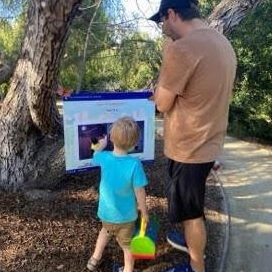The brains of bees are comprised of 960,000 neurons and are the size of a sesame seed. The human brain is 20,000 times bigger, and therefore insects were thought to have constrained neural processing capabilities in comparison. But 100 years ago, Nobel Laureate, Karl von Frisch changed this mindset: he showed that bees indeed have colour vision by training honeybees to collect a sucrose sugar solution associated with coloured cards, and they continued to return to the same coloured cards in the absence of sucrose. Since then, we’ve learned that bees can even perceive ultraviolet wavelengths, which are beyond what we can see.
With technology becoming more compact, smarter (with artificial intelligence) and having greater computing power, robots can now make decisions at fast speeds. The future of robotics is rapidly evolving. Elizabeth believes that robots are becoming more human-like and that we therefore need better, smoother human-robot interactions. Professor Elizabeth Croft wants to make sure that people are considered in the design of robots. In all of her designs, she starts by first observing people. “We need to think about how we’re going to get along with the robots,” she says, after all, they are already increasingly coming into our homes.
Everyone’s reality is slightly different. We all experience the world around us in different ways. Our world is sensed as numbers and electrical impulses that our brains then turn into something meaningful. At Extrasensory, everyone was challenged to make sense of the world of the senses and find the limits to their own. There were many incredible sights, tastes and sensations to behold while exploring the magnificent spaces of the Parliament of Victoria!
The Society’s first female member, Helen Harriet Neild (1859 – 1907) was registered as a Member of the Royal Society of Victoria on 10th October, 1889. The second child and eldest daughter of eleven siblings in the Neild household, Nellie had been brought up as a young society woman, notably singing at the Shakespeare Society’s musical gatherings in the late 1880s. She had attended the University of Melbourne to attain a science degree, which in those early years was offered as a Bachelor of Arts under Sir Frederick McCoy’s guidance. She is identified by Dr Allan Madsley as a zoologist.
We enjoyed another remarkable, whirlwind tour of the sciences at the Society last night, with these six outstanding early-career scientists presenting work that pushes the boundaries of knowledge across incredibly diverse fields of research. The applicant pool grew this year to 60 final year PhDs from across Victorian research institutions, meaning our six finalists had already distinguished themselves simply by being selected to present to us on the evening.






